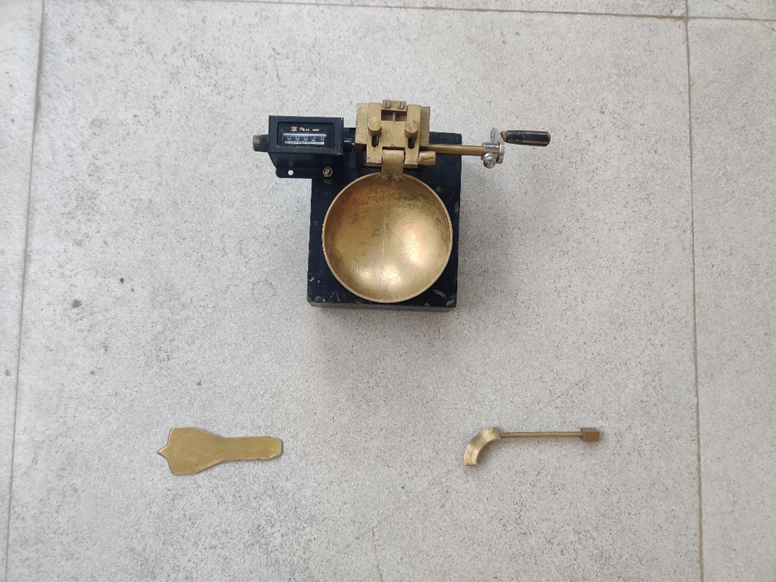Triaxial compression Test as per IS 2720 (Part 1) - 1993
A triaxial test is performed on a cylindrical core soil or rock sample to determine its shear strength. It is a laboratory test that measures the mechanical properties of deformable solids, such as soil, rock, or granular materials. The advantage of using triaxial test is that it replicates the stress conditions that a sample would experience in the ground where it was taken from. In this test, we can control the drainage conditions and also measure the pore water pressure generated inside the sample. The data from the test helps engineers calculate how the ground will respond to different loads and the conditions under which it will fail.
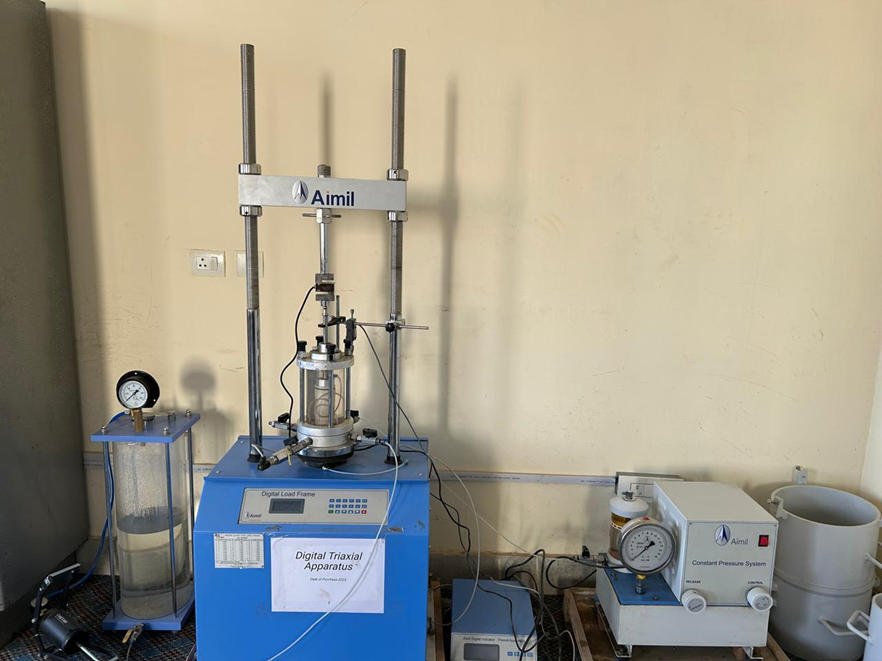
Unconfined Compression Test as per IS 2720 (Part 10) - 1991
The Unconfined Compression Test (UCT) is a laboratory testing method to determine the unconfined compressive strength (UCS) of cohesive soils and soft rocks. UCS is the maximum axial compressive stress a sample can withstand under zero confining stress. It is used to assess the mechanical properties of soil or rock under compression without lateral confinement. It is a relatively simple and fast test, widely employed in geotechnical engineering for determining the shear strength of soil, and is often used in geotechnical engineering designs. The test is strain-controlled and involves applying axial load to a cylindrical specimen of soil. During the test, axial and lateral deformation is also measured.
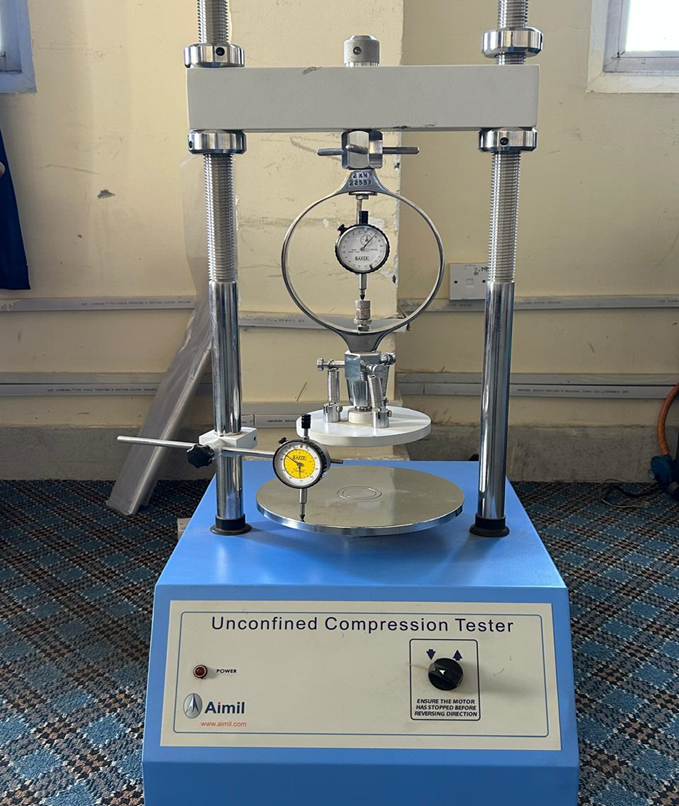
Direct Shear Test as per IS 2720 (Part 13) - 1986
The Direct Shear Test is one of the most common methods for determining the shear strength of soil. Shear strength is defined as the maximum resistance that a material can withstand when subjected to shearing. It measures the soil's resistance to shearing along a predetermined plane. The Direct Shear Test is an experimental procedure conducted in geotechnical engineering practice and research that aims to determine the shear strength parameters of soil materials. Generally, the Direct Shear Test is considered one of the most common and simple tests to derive the strength of a soil and can be performed on undisturbed or remolded samples. In soil mechanics, the shear strength is evaluated using the Mohr-Coulomb (M-C) Failure Criterion. The M-C Criterion assumes that the shear strength depends on three factors:
The normal effective stress (σn)
The friction angle of the material (φ)
The cohesion of the material ©
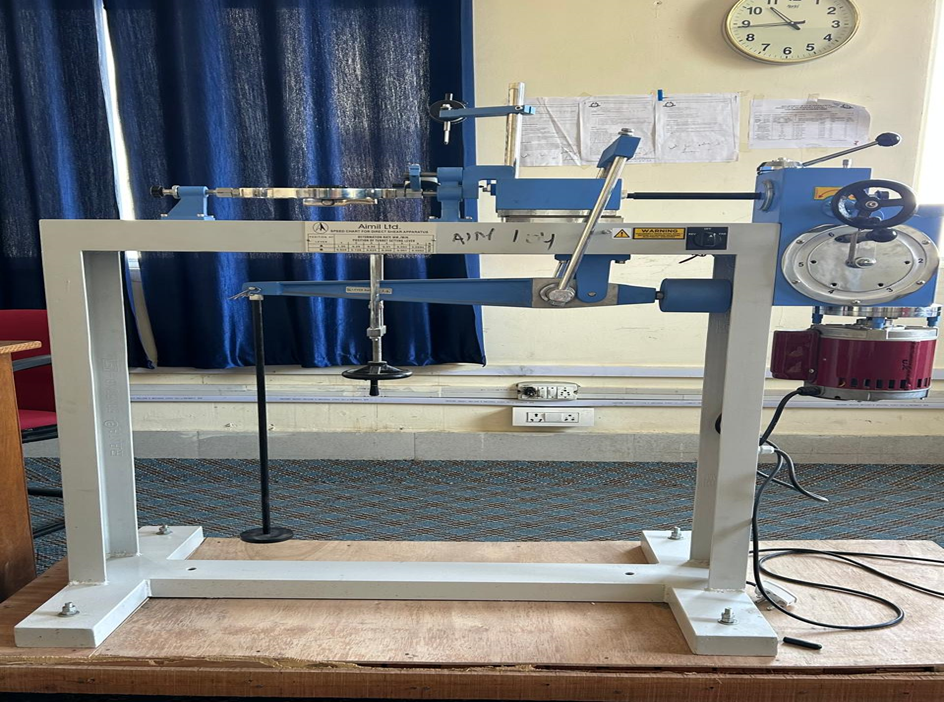
Permeability Test IS 2720 (Part 17)-1986
Soil permeability is crucial for geotechnical engineering projects, as it impacts the design and safety of structures like foundations, dams, and drainage systems. In this test we primarily determine the coefficient of permeability (k), which quantifies the soil's ability to transmit water under a hydraulic gradient. There are different methods for testing permeability, with the most common being the constant head and falling head methods. Here's an overview of each:
Constant Head Permeability:
The constant head permeability test is a common laboratory test used to measure the permeability of coarse-grained soils, such as sands and gravels, which allow water to flow freely. This test provides the coefficient of permeability (k) by measuring the rate at which water flows through a soil sample under a constant hydraulic head.
Falling Head Permeability Test:
The falling head permeability test is used to determine the permeability of fine-grained soils, such as silts and clays, where water flows more slowly and constant head tests are not feasible. This test involves measuring the decrease in water head (height) over time as water flows through the soil sample.
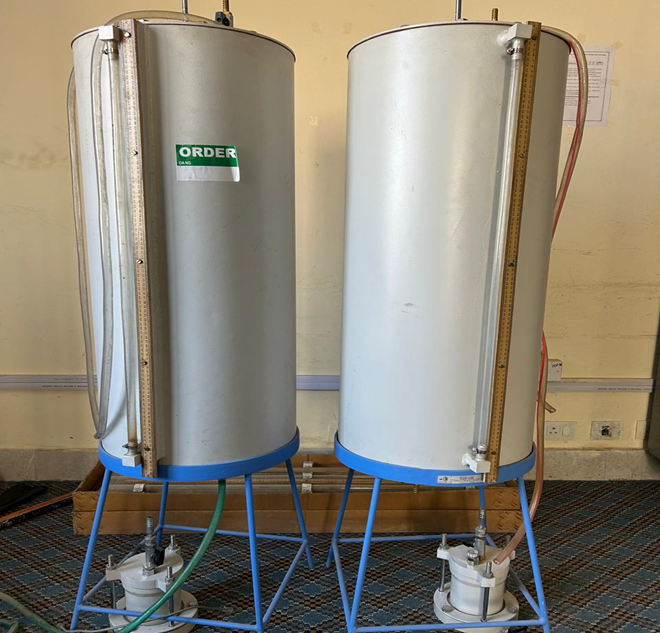
Standard Penetration Test as per IS 2131 – 1981
The Standard Penetration Test (SPT) helps in estimating several important geotechnical properties of soils, which can then be used in various engineering analyses and designs. The SPT apparatus includes a sampler, a drive weight assembly, and a guide pipe assembly.
Sampler: A split-barrel sampler with a 35 mm inner diameter and a 50 mm outer diameter. Drive weight assembly: a 63.5 kg hammer, a driving head, and a guide to allow the hammer to fall freely.
Guide pipe assembly: A pipe with a driving head on one end and a cap on the other.
The purpose of SPT is primarily used to evaluate Soil stratigraphy and density, Soil consistency, bearing capacity for foundations and Settlement potential of soils, particularly granular soils.
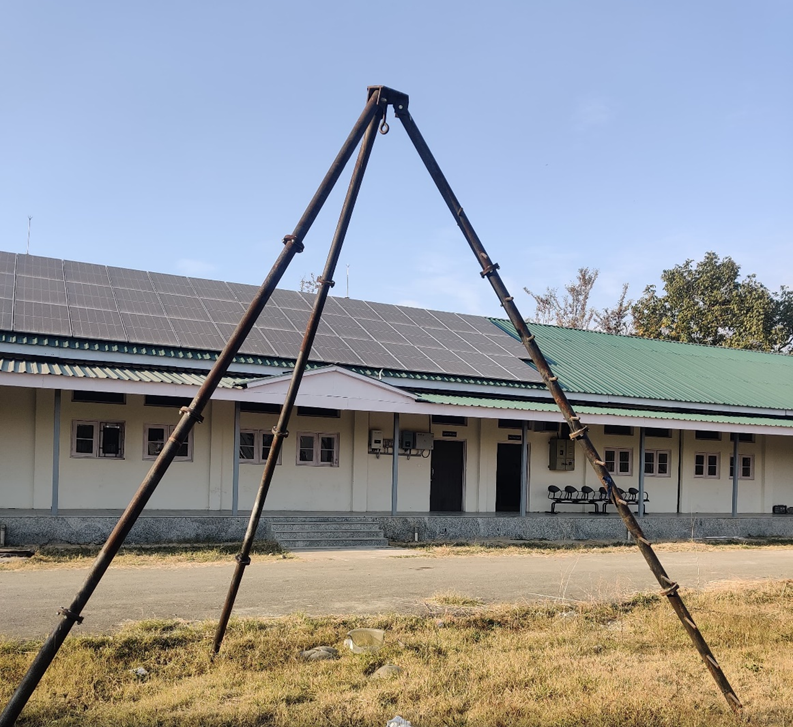
Plate Load Test as per IS 1888-1982
Plate Load Test is an in-situ testing method used to determine the bearing capacity and settlement characteristics of soil, particularly for foundation design. This test is primarily employed in geotechnical engineering to evaluate how soil will perform under applied loads, simulating conditions similar to those encountered by a foundation. The following plate load test apparatus is necessary for performing the test:
-
A steel plate is at least 300 mm square and 6 mm thick.
-
Hydraulic jack & pump
-
A hydraulic jack with a capacity of at least 1.5 times the anticipated test load.
-
A set of steel shims, at least 6 mm thick.
-
Reaction beam or reaction truss
-
A dial gauge, with a range of 0-250 mm and an accuracy of 0.02 mm.
-
Pressure gauge
-
A loading frame with a capacity of at least 1.5 times the anticipated test load. The frame should be designed so that it can be firmly attached to the ground, and so that the load can be applied to the center of the plate.
-
Necessary equipment for the loading platform.
-
A steel rule or tape measure is at least 3 m long.
-
Tripod, Plumb bob, spirit level, etc.
-
A hammer.
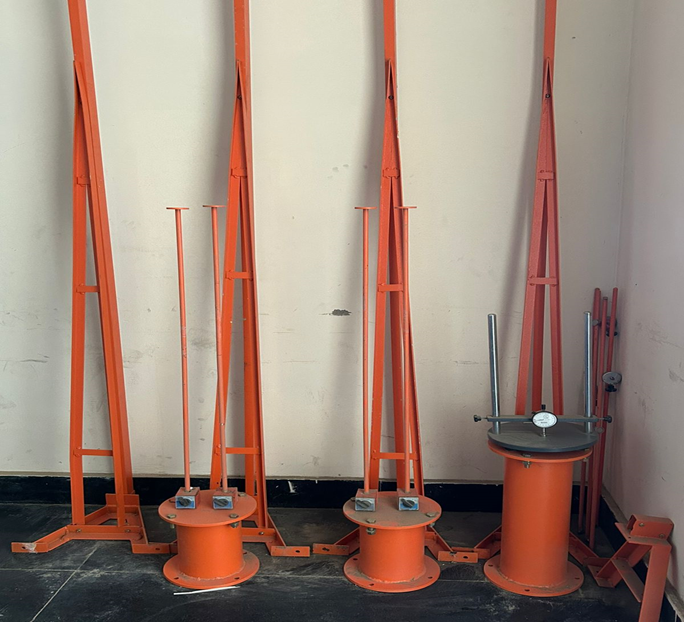
Standard Proctor Test as per IS 2720 (Part VII)-1974
The Standard Proctor test is a laboratory test that measures the relationship between the moisture content and dry density of soil. So, this test is used to determine the optimal moisture content (OMC) and maximum dry density (MDD) of soil, which is important for construction projects. These values help engineers understand how well a soil can be compacted, which is essential for construction projects like roads, dams, and foundations where soil stability is critical. Compaction improves soil strength, reduces settlement, and minimizes water infiltration.
The apparatus required for this test are as follows:
-
Compaction Mold: A cylindrical mold with a base and collar (usually 4 inches in diameter and 4.6 inches high).
-
Rammer: A standard hammer of known weight (2.5 kg) and drop height (30 cm).
-
Balance: For accurate weight measurements.
-
Moisture Can: For determining the moisture content of the soil.
-
Oven: To dry soil samples for moisture content analysis.
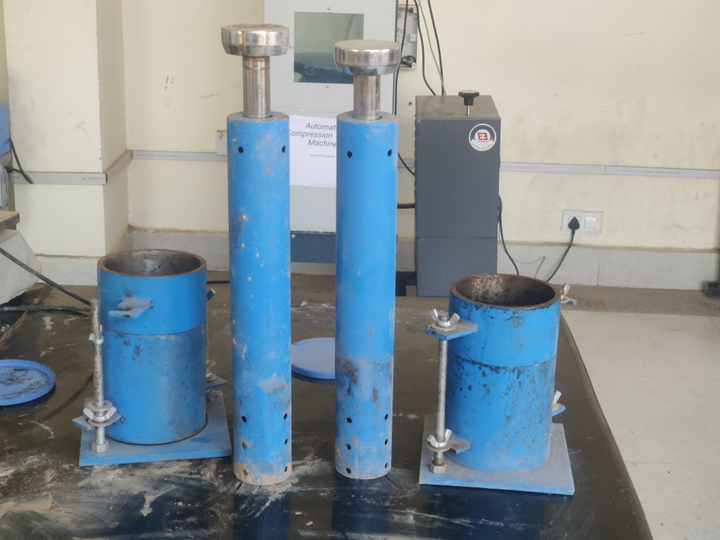
Liquid Limit Test as per IS 2720 (Part V)-1985
The liquid limit (LL) is the moisture content at which a soil changes from a plastic state to a liquid state. The liquid limit is a key parameter in soil mechanics that indicates the shear strength of soils. It's measured using the Atterberg limits test, which is also known as the Casagrande test. The test involves:
-
Placing a clay sample in a standard cup
-
Making a groove in the sample with a spatula
-
Dropping the cup until the groove disappears
-
Determining the water content of the soil
-
Repeating the test with increased water content
-
Plotting the water content against the number of blow
